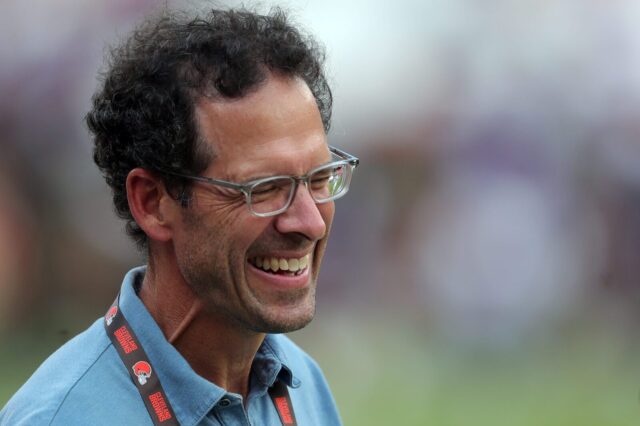This is not a column about Coors Field ruining pitchers.
The fact is, until the Colorado Rockies decide to change a different variable besides the actual pitchers (i.e. trainers, approaches to pitching at altitude, approaches to pitching as a club, a better method of keeping relievers fresh, etc.) in their quest for competent pitching, it’s lazy analysis to simply dismiss the club’s pitching woes as the perils of the boogeyman that is Coors Field. I certainly hope that new general manager Jeff Bridich understands that.
No, this is column about mismanagement that dates back years, illustrated by two pitchers that started this spring with the Rockies. One, Jhoulys Chacin, was released unconditionally a few days ago after a tough spring following an injury. The other, the team’s starter slated for their home opener on April 10, Jorge De La Rosa, had word come down yesterday that he had essentially been shut down after battling a groin injury all spring. What Bridich has had to do with the pasts of these once-promising pitchers, now headed in opposite directions (although De La Rosa’s latest injury doesn’t bode well) may not have been much, and is certainly up for debate, but he will have – has had – a profound influence on their futures.
When Chacin was released, it was heralded by many fans and media members alike. In their eyes, the Rockies had made a tough decision on a homegrown player that simply wasn’t producing. That sounds like improvement, right? In years past, there was no way Colorado would cut bait with a 27-year-old pitcher with a career ERA under 4.00, no matter how badly he’s pitching. The new, decisive version of the Rockies was endearing.
In the grand scheme of things, releasing Chacin probably was the right move. His velocity was down, he struggled with extended pitch counts, and he never could get his walks under control even when healthy.
But then there’s Chacin’s history, which the team is certainly content to let slide under the rug: The young pitcher was originally shut down with rotator cuff and labrum injuries in February of 2014. The team brought him back after two or three weeks when Chacin said he felt better, but then shut him down again for the season after he opened up to a 1-7 start and a 5.40 ERA in 11 starts. It turns out that it was the same problem, yet the Rockies decided that Chacin would not need surgery.
“The cuff is beat up, bad,” head trainer Keith Dugger offered as explanation at the time. “But you have a better chance coming from rehab and basically changing your daily routine to maintain your arm strength.
“He’s not in pain right now. So if you did a cuff surgery, the percentages are against you to come back as the type of pitcher you were. He might not be that guy that can throw 93-95. But you look at guys whose velocities drop, but yet can keep that routine and that strength and that pace.”
Strange. He did say “cuff surgery” right? Because here’s this study by the National Institute of Health that says that pitchers who have had rotator cuff surgery have no higher rates of attrition than their healthy counterparts. From 2011, so you’d think it would have made the rounds by last year.
And then there’s the fact that labrum surgeries (just to cover both possibilities) have made huge strides towards success in recent years. Jose Valverde has led the league in saves three times since his own labrum surgery. Ted Lilly and Anibal Sanchez are both sporting sub-4.00 ERAs since labrum surgery, and most recently, Michael Pineda pitched well in limited action last season after labrum surgery in 2013.
In other words, Dugger’s statements on surgery aren’t quite accurate.
There’s another oddity of Chacin’s situation, too: If the Rockies didn’t think Chacin could come back fully healthy, why did they tender him a multimillion dollar offer this offseason? If they thought he might, but weren’t sure, why didn’t they try to get something for him? Perhaps they did and didn’t get a bite, but it’s tough to imagine that not a single team was intrigued by a cheap 27-year-old kid with a career 3.78 ERA while spending his whole career in Colorado.
Speaking of impressive Coors Field numbers, De La Rosa parlayed his own efforts at altitude into a two-year, $25 million deal late last season. Lauded across Colorado as the only possible way to handle De La Rosa, the deal struck me as desperate. Here’s a pitcher who will be 34 before he pitches a real game in 2015 who has only topped 170 innings twice in his entire career and middling overall numbers. That’s who you’re committing $25 million to?
I know, I know; that’s an oversimplification of De La Rosa’s value. He got that contract because he has had unusual success at Coors Field; a rarity so scarce that it’s worth paying for, as they say. But with the advancements in baseball analytics becoming ubiquitous in front offices across MLB now, doesn’t it make more sense to identify the skills that have made De La Rosa successful at altitude and seek out younger, cheaper, more durable pitchers who exhibit those same traits? Better yet, doesn’t it make sense to draft players who exhibit those traits or instill them in young players in your system?
When your team’s payroll usually never touches $100 million, does paying one-eighth of that to one aging pitcher who struggles away from home make sense? For any club?
You may see this as nitpicking, but I see it as a pattern – a pattern of mismanagement that makes the Rockies’ handling of their pitching staff look archaic.
How many players have the Rockies damaged with misdiagnoses like Chacin’s? We see it year after year as the same players make the trip to the disabled list for the same injuries. Or when a two-week injury becomes a six-week injury, then becomes “we’re shutting him down for the year.” Heck, it took Carlos Gonzalez multiple trips to the DL to figure out why his hand was such a mess (later discovered as a benign tumor).
How many players, like Chacin, were kept around just a little too long until the Rockies couldn’t get anything of value for them?
Most disconcerting of all (in my mind), are the Rockies so clueless about what makes a successful pitcher at Coors Field that they don’t even know why De La Rosa has been able to do it? Is that why they were so desperate to keep a guy who has the odds stacked against a fully healthy, above-average statistical season?
Hopefully these are problems that were mostly inherited rather than created by Jeff Bridich. After all, the Harvard grad has claimed some encouraging differences of opinion from his predecessors. But it still doesn’t explain the handling of Chacin this offseason, long before his play in spring training became an issue.
The Rockies have struggled to field any sort of competent pitching for any reasonable stretch of time, dating back to the team’s inception. Perhaps Bridich holds the key to turning all of that around. Here’s hoping that he’s not just another guy who shrugs and says “Well that’s just Coors Field.”



